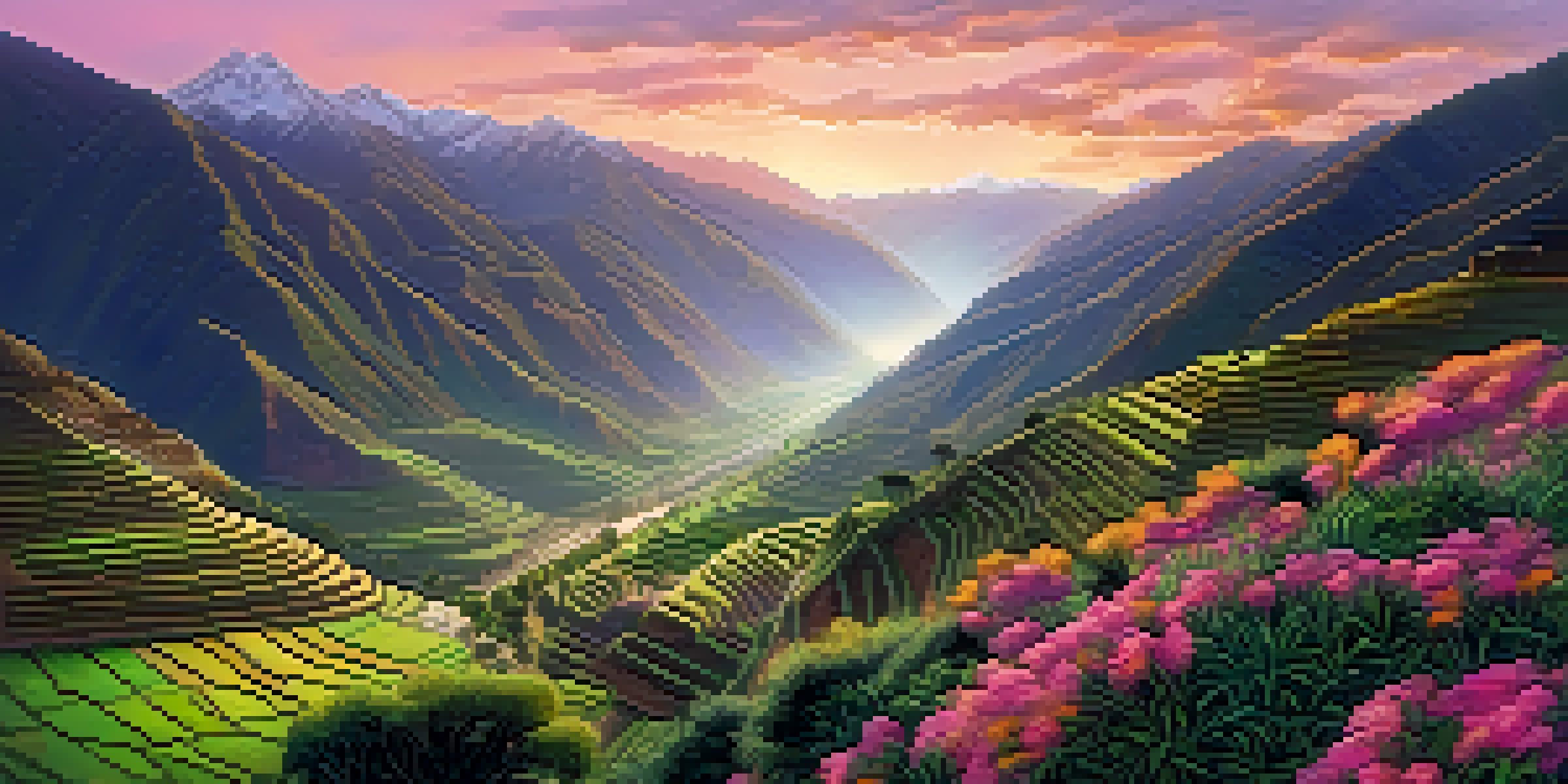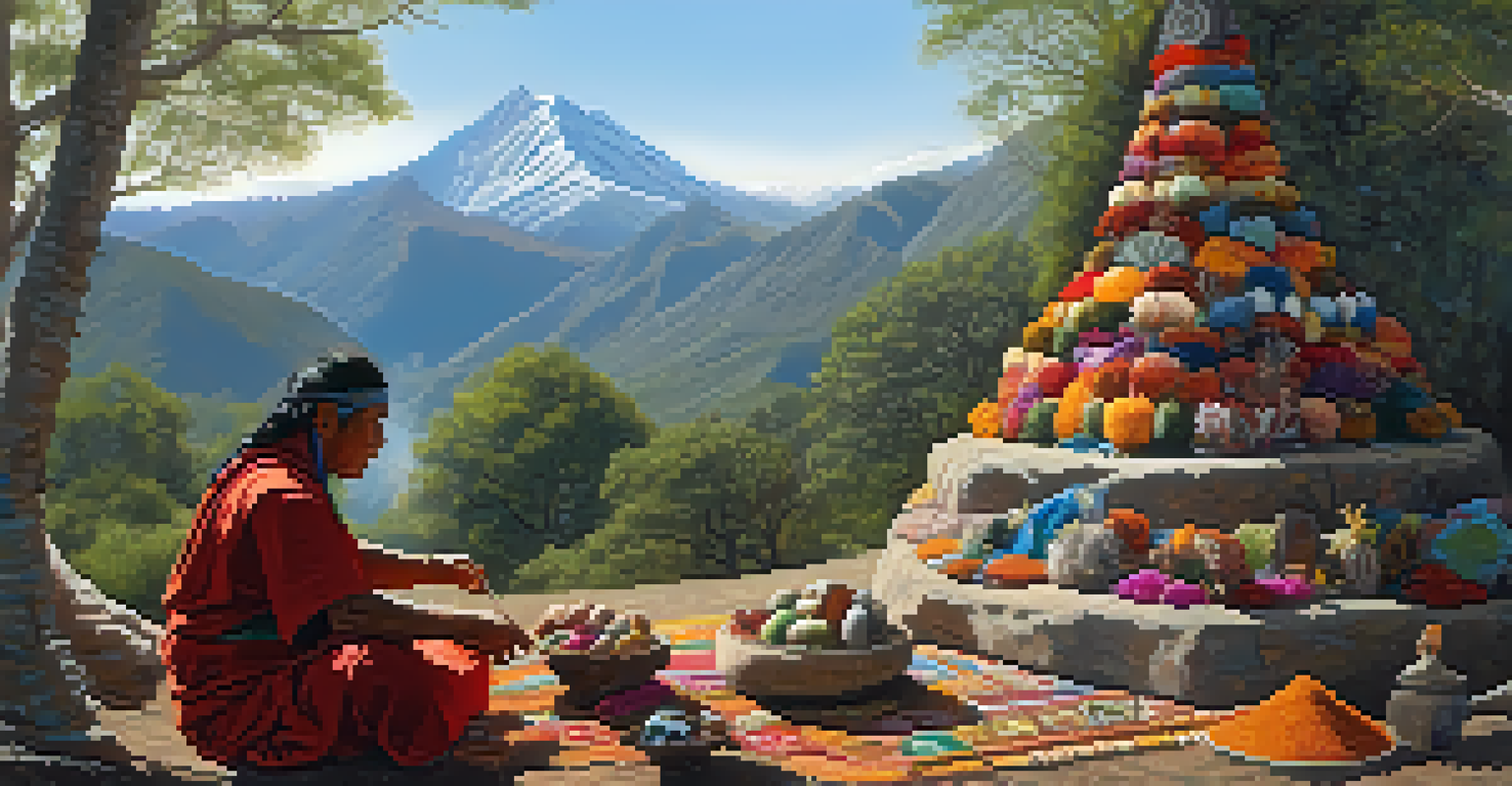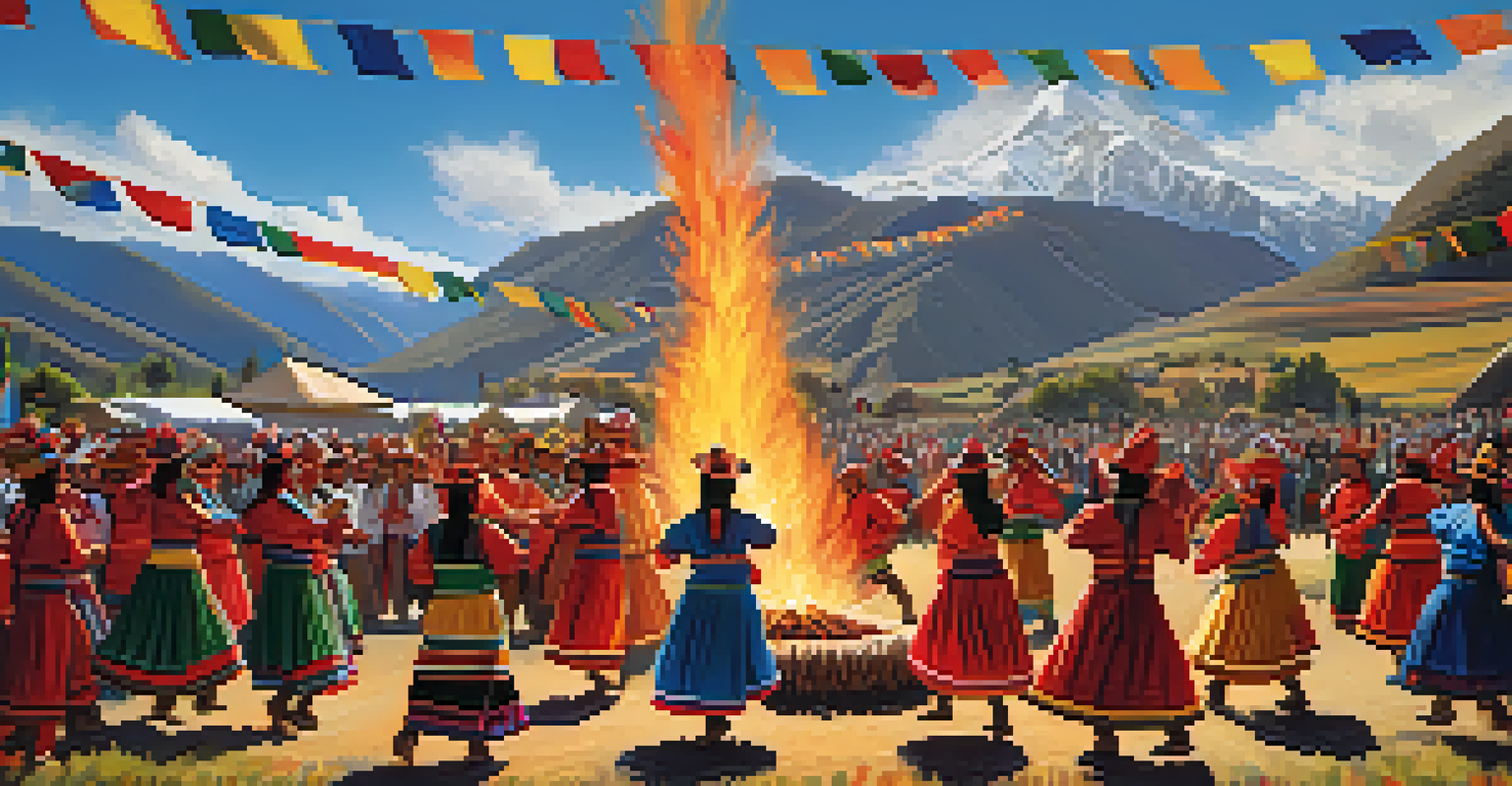Sacred Valley: The Heart of Ancient Peruvian Spirituality

Introduction to the Sacred Valley's Spiritual Significance
The Sacred Valley, located in the heart of Peru, is a breathtaking region that holds deep spiritual significance. It was once a vital hub for the Inca civilization, filled with sacred sites, rituals, and a connection to the Andean cosmovision. Here, the landscape itself is a canvas of spirituality, where mountains and rivers intertwine with ancient stories and traditions.
The mountains are our relatives. They are the ones who have been here long before us and will be here long after us.
This valley is not just a pretty backdrop; it is considered a living entity that embodies the beliefs and practices of its ancestors. Visitors often find themselves drawn into its serene atmosphere, feeling a sense of reverence and connection to the past. The Sacred Valley serves as a reminder of how nature and spirituality have been intertwined for centuries.
In the following sections, we will explore various aspects of the Sacred Valley, from its historical roots to the modern spiritual practices that continue to thrive in this enchanting locale.
Historical Overview: The Inca Influence
The Inca Empire, which flourished from the 15th century until the Spanish conquest, regarded the Sacred Valley as a sacred space. It was home to important ceremonial sites, agricultural innovations, and vibrant communities that thrived on the fertile land. The valley's strategic location allowed the Incas to maintain a powerful connection between the mountains and the sacred rivers that flowed through it.

One of the most significant sites is Ollantaytambo, a fortress and religious center that showcases the architectural prowess of the Incas. The terraced hillsides and stone structures reflect not only their engineering skills but also their deep spiritual beliefs. Each stone and each pathway tells a story of devotion and reverence for the Earth and the cosmos.
Sacred Valley's Spiritual Legacy
The Sacred Valley embodies a rich spiritual heritage that connects the ancient Inca civilization with modern spiritual practices.
Today, the remnants of Inca civilization continue to attract visitors and researchers alike, eager to uncover the mysteries of their spiritual practices and societal structures. The historical footprint left by the Incas is a testament to the valley's enduring significance.
Key Sacred Sites: Temples and Ceremonies
Among the most important sacred sites in the Sacred Valley is the Temple of the Sun, or Coricancha, located near Cusco. This temple was dedicated to Inti, the Sun God, and was considered the most important religious site of the Inca. Even today, the remnants of this temple inspire awe, as visitors marvel at the precision of the stonework and the energy that still resonates in the area.
Nature is not a place to visit. It is home.
Another remarkable site is the agricultural terraces of Moray, believed to have been an agricultural laboratory for the Incas. The circular terraces created unique microclimates that allowed for experimentation with different crops. This relationship between agriculture and spirituality highlights the Incas' understanding of nature and their respect for its cycles.
Ceremonies still take place at these sites, connecting modern spiritual practices with ancient traditions. Locals and travelers alike participate in rituals that honor the land and its spirits, creating a bridge between past and present.
Modern Spiritual Practices in the Sacred Valley
While the Sacred Valley is steeped in ancient traditions, it continues to evolve with modern spiritual practices. Many visitors come to participate in retreats, workshops, and ceremonies that honor the Andean worldview. These experiences often include offerings to Pachamama, or Mother Earth, emphasizing gratitude and respect for the natural world.
Local shamans, who act as spiritual guides, play a significant role in these practices. They offer insights into the healing properties of plants and the importance of connecting with the spirit of the land. Many find that these experiences provide a sense of grounding and connection in our fast-paced, modern lives.
Nature's Role in Spirituality
Mountains, rivers, and the natural landscape are integral to the spirituality of the Sacred Valley, reflecting a deep respect for the environment.
The blending of ancient and contemporary practices in the Sacred Valley draws people from all walks of life, fostering a sense of community and shared spirituality. This unique environment allows for personal growth and exploration of one's spiritual path.
The Role of Nature in Sacred Valley Spirituality
Nature is at the core of spirituality in the Sacred Valley, with mountains, rivers, and valleys serving as sacred entities. The Andean people view the natural world as imbued with spirit, where every mountain is a guardian and every river a source of life. This deep connection to nature fosters a sense of respect and stewardship for the environment.
The Apus, or mountain spirits, hold a significant place in the hearts of the locals. Each mountain is believed to have its unique energy and personality, influencing the lives and traditions of the people living in its shadow. Rituals often take place at the foot of these towering giants, as offerings are made to honor their presence.
This profound relationship with nature encourages visitors to reflect on their own connection to the environment. By immersing oneself in the beauty of the Sacred Valley, one can cultivate a deeper appreciation for the world around them and the spiritual essence that resides within.
Cultural Festivals: Celebrating Ancient Traditions
Throughout the year, the Sacred Valley hosts various cultural festivals that celebrate ancient traditions and spiritual practices. One of the most notable is Inti Raymi, the Festival of the Sun, which honors the Inca Sun God and marks the winter solstice. During this vibrant event, participants don traditional attire, perform dances, and reenact ancient ceremonies that have been passed down through generations.
These festivals not only serve as a way to preserve cultural heritage but also bring communities together in celebration. Locals and visitors alike participate in the festivities, fostering a sense of unity and shared purpose. The energy of the celebrations is palpable, as laughter, music, and joy fill the air.
Cultural Festivals Unite Community
Festivals like Inti Raymi celebrate ancient traditions and foster a sense of unity among locals and visitors alike in the Sacred Valley.
Attending a festival in the Sacred Valley is an unforgettable experience that provides insight into the rich cultural tapestry of the region. It’s a reminder of how spirituality can be celebrated and expressed through community and tradition.
Conclusion: The Enduring Spirit of the Sacred Valley
In conclusion, the Sacred Valley is not just a geographical location; it is a living testament to the enduring spirit of ancient Peruvian spirituality. From its historical roots in the Inca Empire to the modern-day practices that flourish among its stunning landscapes, the valley continues to inspire and connect people to something greater than themselves.
The sacred sites, natural beauty, and vibrant cultural festivals make the Sacred Valley a unique destination for anyone seeking spiritual growth or connection. Whether you are drawn by the allure of ancient history or the promise of personal transformation, this valley has something to offer everyone.

As we navigate our own spiritual journeys, the Sacred Valley reminds us to honor the past while embracing the present, fostering a deeper connection with the Earth and the universe. It stands as a symbol of hope, renewal, and the power of spirituality in our lives.